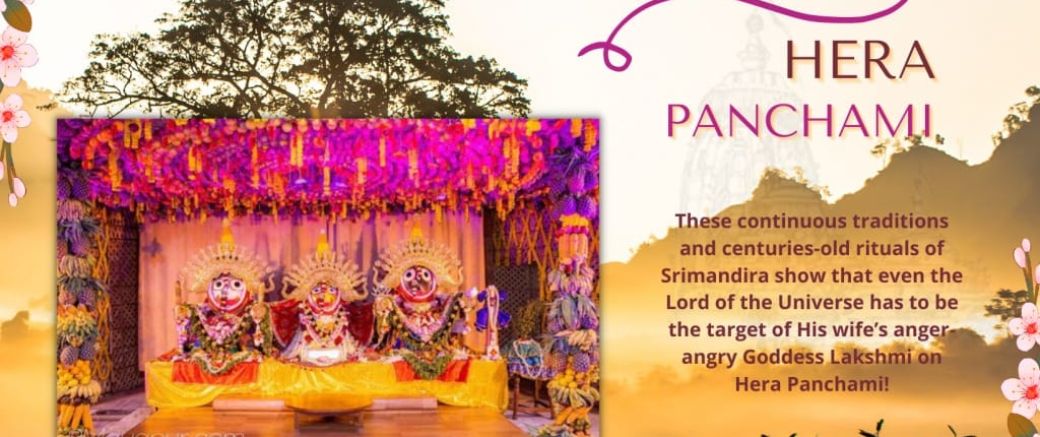The Story of Hera Panchami!

During the Ratha-yātrā festival in Jagannātha Purī, when Lord Caitanya and His party were at the Gundicā Temple, a celebration erupted—with colorful processions, music, and dancing. Svarūpa Dāmodara and others spoke with the Lord near the temple when suddenly the atmosphere shifted.
At that precise joyful moment, Goddess Lakṣmī, the divine consort of Lord Jagannātha, arrived in a majestic procession. Seated upon a resplendent golden four-pillared palanquin adorned with jewels, she led her entourage toward Gundicā—to bring her Lord back home.
Lakṣmī’s Protest and Displeasure
Lakṣmī Devi was deeply displeased. In her eyes, Lord Jagannātha had been taken away by His brother Balabhadra and sister Subhadra too often and for too long, neglecting her affection and participation in the Ratha-yātrā festivities. On this “fifth day” (Panchami), she decided enough was enough—thus the name Hera Panchami (hera = “to see/meet secretly”).
Bearing her anger, she attempted a dramatic act of reclaiming: she symbolically attempted to steal Jagannātha from Gundicā, signifying she wouldn’t let the festival conclude until the Lord returned to her side.
The Turning Point
With determination, Lakṣmī ordered the temple ropes to be cut, seeking to disrupt the pulling of the chariot. Her associates prepared to interfere with the festivities. But Svarūpa Dāmodara and Rūpa Gosvāmī, witnessing her wrath, stepped forward.
They approached Lakṣmī Devi with reverence, speaking tenderly and lovingly to pacify her mind. Their gentle words reminded her of the broader joy of the festival, and with pure devotional respect, they soothed her jealousy and disappointment.
Reconciliation and Departure
Gradually, Lakṣmī Devi’s anger melted away. Comforted by heartfelt assurances and reassured of her deep place alongside the Lord, she relinquished her disruptive act and returned, calm and satisfied, into the temple to resume her worship.
Summary Meaning
Hera Panchami illustrates the mood of Lakṣmī’s deep love and possessiveness for Jagannātha. Even amidst divine pastimes of joy and celebration, when devotion is full and hearts are immersed in worship, attachment arises—and with it, emotion. Lakṣmī’s act symbolizes that intimate, personal bond the devoted feel when separated from their beloved Lord.
Her anger leads to meaningful dialogue and reconciliation, demonstrating how tender mercy reigns even in divine love relationships. It’s a touching vignette of devotional sentiment woven into the Ratha-yātrā lila.
Jai Sri Laxmi Devi Ki Jai!!!!
Sri Ratha Yatra Ki Jai!!!
Posted 2 days ago